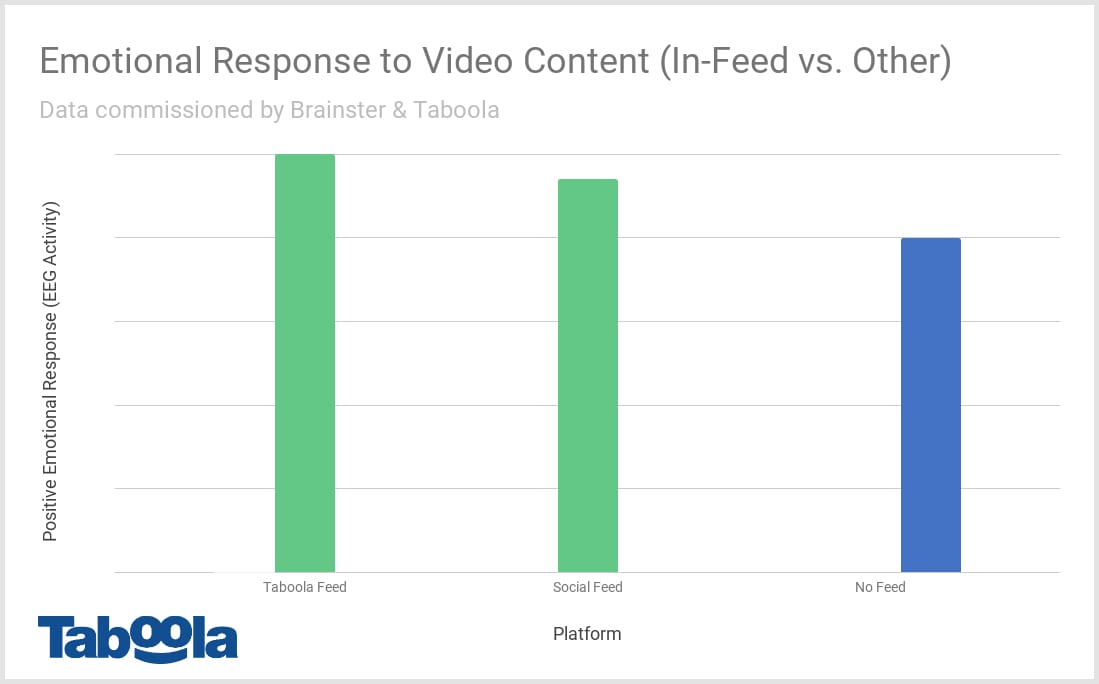Waiting in line to get your coffee.
Working on a work assignment and need to distract yourself a little.
In the bathroom.
A few minutes to kill before a meeting.
Waiting for your friend to arrive to lunch.
Re-energizing before you start to work after your lunch break.
Lying in bed, unable to fall asleep.
What do your content consumers do to fill these ‘empty’ moments throughout their day? According to research investigating cell phone use amongst university students, there’s a high chance they’re using their phone.
Based on a study we commissioned with the neuromarketing firm Brainster, there’s a high chance they’re scrolling down a feed.
This unique study shows content consumers are having fun on feeds.
In an effort to understand why consumers are spending so much time on feeds on their phones, we sought to understand how people’s brains and physiologies respond to identical stimuli viewed in a feed and not in a feed.
Participants were asked to view the same videos, but in both a feed context and in a non-feed context. The results were remarkable—we saw a 9.44% increase in positive emotion when users watched a video in a feed. This was measured using an EEG, a machine used to evaluate the electrical activity in the brain.

To take it one step further, all humans repeat behaviors that give them pleasure and refrain from behaviors that cause them pain. In these dull moments, users often choose to go online to fill their time.
When your content consumers are online, you want them experiencing this positive emotion while consuming content on your site—you want them having fun.
While content consumers are having fun, they’re repeating their behavior.
Part of the reason we see this increase in positive emotion in content consumers when they’re watching videos on feeds is linked to the commonly known chemical, dopamine. When we experience pleasure, what we’re actually experiencing is a dopamine release into our brain—the same chemical that’s released when people eat chocolate, gamble, or fall in love.
This motivates us to seek out and do that same activity again and again, and the higher the reward, the higher the frequency of the behavior. The infinite feed experience provides a similar type of reward for your content consumers.
The uncertainty of what is coming next is what makes an infinite feed fun.

You can increase the chance that a behavior, like scrolling and clicking on content, will be repeated by fostering an element of surprise as to when the next reward is coming.
Affective and behavioral neuroscientists at the University of Michigan help us understand this concept, called variability. Imagine that you are waiting for an important communication, that will be delivered either via email or mail.
In the case of snail mail, your behavior would consist of checking your mailbox daily. However, since you know when your mailman is supposed to arrive, you’ll only check your mailbox at that exact time, and if the letter isn’t there when you check,, you won’t check again until the following day. In the case of email, your behavior (the amount of times that you check your email) will increase substantially, given that emails can arrive at any time. This is a variable reward.
An infinite feed mimics variability—users are waiting for the next piece of content that will satisfy them, so they keep scrolling until they receive their reward, the entertainment or information they were looking for.
An infinite feed’s simplicity keeps content consumers moving.

The more difficult the behavior, the smaller the chances that the behavior will be repeated. When the behavior is simple, the chances go up. Social psychologists have explained that simplicity indeed increases the number of times you repeat a behavior, and that, with time, that behavior becomes automatic for you and can turn into a habit.
In the case of the infinite feed, the ease at which users navigate them coupled with how content is displayed make them very simple to navigate, and is part of the reason why our scrolling through social feeds has become such an ingrained habit for us.
To sum it up, it pays to ensure your users are having fun.
- Variability keeps content consumers on the tips of their toes.
- The simplicity in display and navigation keeps them coming back.
- They’re fun—both variability and simplicity contribute to an increase in time spent on feeds.
This ultimately results in a better, more positive user experience. A better user experience leads to more engagement on-site, which has many positive implications for driving revenue and increasing the visibility of your organic content.
Check out how MHS Digital, Euronews and Huffington Post Korea have all increased revenue and engagement with organic content with an infinite scroll environment on-site.